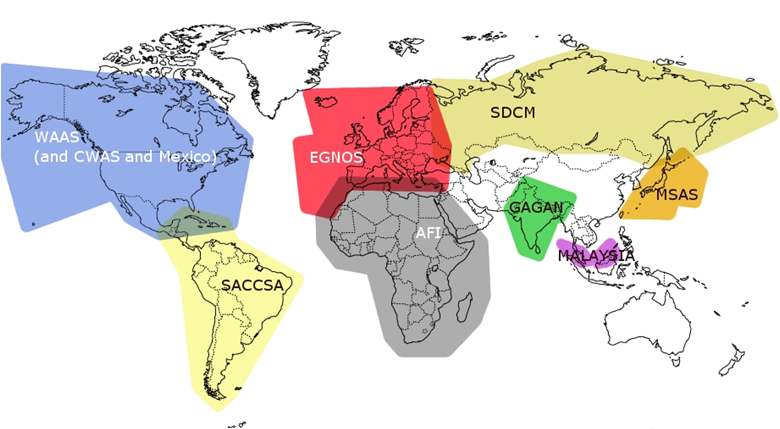If you wish to contribute or participate in the discussions about articles you are invited to contact the Editor
SBAS Systems: Difference between revisions
Jump to navigation
Jump to search
(Intermediate) |
No edit summary |
||
| Line 9: | Line 9: | ||
SBAS systems are spreading out all over the world. More and more, it is believed that upon dual-frequency SBAS service provision, a seamless navigation will be possible from and to any two locations in the world. | SBAS systems are spreading out all over the world. More and more, it is believed that upon dual-frequency SBAS service provision, a seamless navigation will be possible from and to any two locations in the world. | ||
From all the SBAS systems in the world, three are already operational –WAAS, MSAS, EGNOS– , two are under implementation –GAGAN, SDCM– while the rest are under feasibility studies –SACCSA, AFI. | |||
[[File:SBAS_in_the_world.png|Some SBAS systems either operational, development or feasibility study.|frame|center|300px]] | [[File:SBAS_in_the_world.png|Some SBAS systems either operational, development or feasibility study.|frame|center|300px]] | ||
==WAAS== | |||
==Notes== | ==Notes== | ||
Revision as of 23:17, 31 March 2011
| Fundamentals | |
|---|---|
| Title | SBAS Systems |
| Author(s) | GMV |
| Level | Basic |
| Year of Publication | 2011 |
SBAS systems are spreading out all over the world. More and more, it is believed that upon dual-frequency SBAS service provision, a seamless navigation will be possible from and to any two locations in the world.
From all the SBAS systems in the world, three are already operational –WAAS, MSAS, EGNOS– , two are under implementation –GAGAN, SDCM– while the rest are under feasibility studies –SACCSA, AFI.
WAAS
Notes

